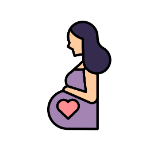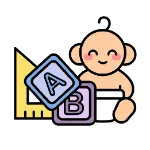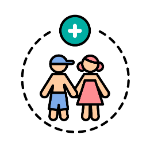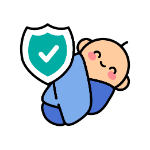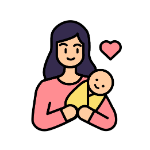
Child Safety
Baby On The Move: A Checklist To Baby Proof Your House
7 min | Updated on 30-03-2023 by HappyPreggie
Do you have anxiety about taking your newborn home from the hospital? Looking around the house to see what modifications need to be done to keep the baby safe may be stressful for pregnant parents. When parents do an internet search for the best baby-proofing equipment, they might soon get overwhelmed by the seemingly endless lists of must-have things.

(Image credits to Busy Creating Memories)
When the time comes to bring your newborn home, you'll want to make sure the house is ready for him—and the ideal time to babyproof your home is well before he arrives. Because some of the suggested baby proofing procedures may take time, start at least three months before your due date. Read the whole article to get the checklist to babyproof your house.
Install smoke detectors and carbon monoxide: Both of these gadgets are quite important. Make sure to test yours once a month to ensure they're either completely charged or have new batteries inside. Replace your batteries once a year.
First aid kit: You, your husband, and your baby's sitter should all be educated in infant CPR, and you should also have a well-stocked first-aid kit on hand.
Burns: Small babies, especially those under the age of two, are frequently burnt in the kitchen by scalded food and liquid. When parents are cooking, they may be unaware that their baby has sneaked up behind them. Toddlers have also been known to pull hot liquid pans from stoves onto themselves.

(Image credits to IFMCH)
Poisoning: A lot of household cleaners are kept in cabinets that are directly on the ground level. Crawling babies will be able to see those cabinets. A baby just needs a minute or two to remove the cap of a household cleaner and get it into their mouth.
Furniture tipping over: When kids are beginning to walk or furniture cruise, things like bookshelves and dressers may provide a perfect spot for them to balance themselves. However, if those parts aren't secured to the wall, they can fall over and injure themselves.
Electrocution: Babies are attracted to electrical outlets. As they move from room to room, outlets are at the perfect height for curious toddlers to notice. They could try to suffocate them with their lips or their fingers.
Families like getting together in the kitchen to eat, talk about their days and laugh. But with a baby in the picture, things get a lot more difficult. In the kitchen, babies are exposed to a variety of hazards, the most serious of which is burnt. Here's a checklist to help you make sure your kitchen is up to order when it comes to your baby's safety.
Knob covers: Stove knob covers might prevent your baby from turning them on. Also, install a door lock on your oven to prevent it from being accidentally opened. It's also a good idea to cook on the back burners, where your child won't be able to reach the pot handles. Also, secure the fridge with a lock and hide any magnets so they're out of sight and out of reach.
Knives and any items with sharp edges: Never leave a knife on the kitchen counter or table, and store them away from children in a block or a drawer with a safety latch. Keep sharp-edged appliances, such as food processors, locked away and out of reach of your child.

(Image credits to Mom Loves Best)
Child safety latches and locks: A lock should be installed on the under-sink and other cupboards where cleaners, bleach, and other toxic chemicals are frequently stored, much like in the bathroom. Instead, place such home items in high-up lockable cabinets for further security.
Living rooms have earned their name since they are the most used rooms in your home. Living rooms are bustling places, whether you're conversing with family or calmly watching television. In the living room, falls and falling items, such as televisions, pose a significant risk. Here are some suggestions for babyproofing the living room so that your child may explore, grow, and learn.
Electrical and window cords: Lamp and computer cables are strangling hazards, so tie them up to keep them out of your baby's reach. Shorten window covering cables, cover the ends with plastic, and connect them to the wall using a tie-down clip.
Choose your center table carefully: Coffee tables are ideal for putting a drink down or putting reading materials. They do, however, occasionally contain sharp corners that might be harmful to your baby, particularly if she falls and bangs her face or teeth on them. To keep your infant safe, look for one with rounded edges, or try a soft ottoman with storage, which is much simpler to move around and provides excellent storage for your child's toys and other belongings.

(Image credits to Extra Space Storage)
Think from the baby’s perspective: For a few minutes, crawl about on the floor to acquire a different viewpoint on what your baby sees. Look for anything that can pique your baby's interest and see what you can do to make the space safer.
Use outlet cover: If you can't hide your outlet behind your furniture despite your best attempts and you need items plugged in, you can use an outlet cover to keep your kid from pulling out your cables.
Baths should be your baby's only activity in the bathroom for the first couple of years. Bathrooms still contain a lot of interest and risk for kids, even if they don't need to use them as much as we do. Here are some of the safety concerns you should be aware of when using the restroom.
Be aware of the curling iron: If you want to curl your hair using curling irons, ensure sure they are out of reach of your child. They'll want to grab one if they spot one on the counter's edge. Alternatively, they might grip the cable and pull it down on themselves, causing a burn.
Toilet seat lock: Remember to keep your toilet lid down or get a toilet lid lock. If you fail to lock the door and leave the lid up, your baby might be drinking toilet water before you realize it. Toilets can also potentially be a source of drowning.

(Image credits to Mom Loves Best)
Keep your medications out of the reach: When babies are in the tub, they are used to bath toys, and your razor may appear to be a toy they haven't played with before.
Lock up the medications: If you want to put your medicines in the bathroom cabinet rather than the kitchen cabinet, make sure you secure them with a childproof lock.
When it comes to your baby's nursery décor, choose safe, non-tip furniture, cordless window shades, and toy storage. Here are some of the safety hazards you should be on the watch for in the nursery.
Use a baby monitor: It's possible that your baby is awake in the nursery and you're unaware of it. Consider a noise-detecting baby monitor, as well as a camera, so you can check on your child regularly to ensure they aren't becoming too interested for their own good. Make sure, however, that the monitor is placed as far away from the crib as practicable. You don't want your curious toddler to get his hands on the monitor and start tinkering with the cables.
Use window guard: You may be able to skip this step if your windows are constantly shut. However, if they are simple to open or you want fresh air coming in, you should invest in a window guard to keep your child safe.

(Image credits to claytonandclayton.com)
Look for a safe crib: Drop-side cribs appear to be a good option for parents who struggle to lift a baby high enough over the crib's edge. Drop-side cribs, on the other hand, have been known to injure babies. Make sure to have a safe crib for your baby when you pick one.
Keep the wall near the crib without decorations: You don't want your infant to grab for a wall hanging and accidentally knock it over into their cot. Some wall art or picture frames are so hefty that if your infant knocked it over, it may cause significant injury.
Consider a glider over a rocking chair: With an old-fashioned rocking chair, babies may easily rock over their fingers or toes. A nursery glider with a lock is a superior alternative because it won't be a danger to your infant while you aren't using it.
Moms have to cope with a lot of things that are beyond their control. When your kid is awake, babyproofing your house makes things safer, but it does not substitute careful monitoring. The checklist you need to complete may appear difficult at first, but once you get started, it will go very quickly.
If you want to read more informative articles by HappyPreggie you can read- Top 10 Safety Devices That You Definitely Need In Your Home In 2022 or you can also try reading- Age-By-Age Feeding Guide To Feed Your Baby For The First Year.
(Image credits to Busy Creating Memories)
When the time comes to bring your newborn home, you'll want to make sure the house is ready for him—and the ideal time to babyproof your home is well before he arrives. Because some of the suggested baby proofing procedures may take time, start at least three months before your due date. Read the whole article to get the checklist to babyproof your house.
#1 Babyproofing the House
Install smoke detectors and carbon monoxide: Both of these gadgets are quite important. Make sure to test yours once a month to ensure they're either completely charged or have new batteries inside. Replace your batteries once a year.
First aid kit: You, your husband, and your baby's sitter should all be educated in infant CPR, and you should also have a well-stocked first-aid kit on hand.
Burns: Small babies, especially those under the age of two, are frequently burnt in the kitchen by scalded food and liquid. When parents are cooking, they may be unaware that their baby has sneaked up behind them. Toddlers have also been known to pull hot liquid pans from stoves onto themselves.
(Image credits to IFMCH)
Poisoning: A lot of household cleaners are kept in cabinets that are directly on the ground level. Crawling babies will be able to see those cabinets. A baby just needs a minute or two to remove the cap of a household cleaner and get it into their mouth.
Furniture tipping over: When kids are beginning to walk or furniture cruise, things like bookshelves and dressers may provide a perfect spot for them to balance themselves. However, if those parts aren't secured to the wall, they can fall over and injure themselves.
Electrocution: Babies are attracted to electrical outlets. As they move from room to room, outlets are at the perfect height for curious toddlers to notice. They could try to suffocate them with their lips or their fingers.
#2 Babyproofing the Kitchen
Families like getting together in the kitchen to eat, talk about their days and laugh. But with a baby in the picture, things get a lot more difficult. In the kitchen, babies are exposed to a variety of hazards, the most serious of which is burnt. Here's a checklist to help you make sure your kitchen is up to order when it comes to your baby's safety.
Knob covers: Stove knob covers might prevent your baby from turning them on. Also, install a door lock on your oven to prevent it from being accidentally opened. It's also a good idea to cook on the back burners, where your child won't be able to reach the pot handles. Also, secure the fridge with a lock and hide any magnets so they're out of sight and out of reach.
Knives and any items with sharp edges: Never leave a knife on the kitchen counter or table, and store them away from children in a block or a drawer with a safety latch. Keep sharp-edged appliances, such as food processors, locked away and out of reach of your child.
(Image credits to Mom Loves Best)
Child safety latches and locks: A lock should be installed on the under-sink and other cupboards where cleaners, bleach, and other toxic chemicals are frequently stored, much like in the bathroom. Instead, place such home items in high-up lockable cabinets for further security.
#3 Babyproofing the Living Room
Living rooms have earned their name since they are the most used rooms in your home. Living rooms are bustling places, whether you're conversing with family or calmly watching television. In the living room, falls and falling items, such as televisions, pose a significant risk. Here are some suggestions for babyproofing the living room so that your child may explore, grow, and learn.
Electrical and window cords: Lamp and computer cables are strangling hazards, so tie them up to keep them out of your baby's reach. Shorten window covering cables, cover the ends with plastic, and connect them to the wall using a tie-down clip.
Choose your center table carefully: Coffee tables are ideal for putting a drink down or putting reading materials. They do, however, occasionally contain sharp corners that might be harmful to your baby, particularly if she falls and bangs her face or teeth on them. To keep your infant safe, look for one with rounded edges, or try a soft ottoman with storage, which is much simpler to move around and provides excellent storage for your child's toys and other belongings.
(Image credits to Extra Space Storage)
Think from the baby’s perspective: For a few minutes, crawl about on the floor to acquire a different viewpoint on what your baby sees. Look for anything that can pique your baby's interest and see what you can do to make the space safer.
Use outlet cover: If you can't hide your outlet behind your furniture despite your best attempts and you need items plugged in, you can use an outlet cover to keep your kid from pulling out your cables.
#4 Babyproofing the Bathroom
Baths should be your baby's only activity in the bathroom for the first couple of years. Bathrooms still contain a lot of interest and risk for kids, even if they don't need to use them as much as we do. Here are some of the safety concerns you should be aware of when using the restroom.
Be aware of the curling iron: If you want to curl your hair using curling irons, ensure sure they are out of reach of your child. They'll want to grab one if they spot one on the counter's edge. Alternatively, they might grip the cable and pull it down on themselves, causing a burn.
Toilet seat lock: Remember to keep your toilet lid down or get a toilet lid lock. If you fail to lock the door and leave the lid up, your baby might be drinking toilet water before you realize it. Toilets can also potentially be a source of drowning.
(Image credits to Mom Loves Best)
Keep your medications out of the reach: When babies are in the tub, they are used to bath toys, and your razor may appear to be a toy they haven't played with before.
Lock up the medications: If you want to put your medicines in the bathroom cabinet rather than the kitchen cabinet, make sure you secure them with a childproof lock.
#5 Baby Proofing the Nursery
When it comes to your baby's nursery décor, choose safe, non-tip furniture, cordless window shades, and toy storage. Here are some of the safety hazards you should be on the watch for in the nursery.
Use a baby monitor: It's possible that your baby is awake in the nursery and you're unaware of it. Consider a noise-detecting baby monitor, as well as a camera, so you can check on your child regularly to ensure they aren't becoming too interested for their own good. Make sure, however, that the monitor is placed as far away from the crib as practicable. You don't want your curious toddler to get his hands on the monitor and start tinkering with the cables.
Use window guard: You may be able to skip this step if your windows are constantly shut. However, if they are simple to open or you want fresh air coming in, you should invest in a window guard to keep your child safe.
(Image credits to claytonandclayton.com)
Look for a safe crib: Drop-side cribs appear to be a good option for parents who struggle to lift a baby high enough over the crib's edge. Drop-side cribs, on the other hand, have been known to injure babies. Make sure to have a safe crib for your baby when you pick one.
Keep the wall near the crib without decorations: You don't want your infant to grab for a wall hanging and accidentally knock it over into their cot. Some wall art or picture frames are so hefty that if your infant knocked it over, it may cause significant injury.
Consider a glider over a rocking chair: With an old-fashioned rocking chair, babies may easily rock over their fingers or toes. A nursery glider with a lock is a superior alternative because it won't be a danger to your infant while you aren't using it.
Moms have to cope with a lot of things that are beyond their control. When your kid is awake, babyproofing your house makes things safer, but it does not substitute careful monitoring. The checklist you need to complete may appear difficult at first, but once you get started, it will go very quickly.
If you want to read more informative articles by HappyPreggie you can read- Top 10 Safety Devices That You Definitely Need In Your Home In 2022 or you can also try reading- Age-By-Age Feeding Guide To Feed Your Baby For The First Year.
Join the largest support network for family health and well-being. Ready to get started?
Get started
